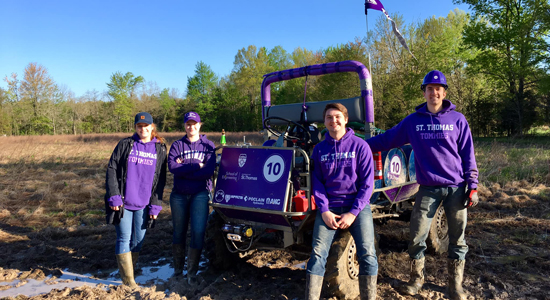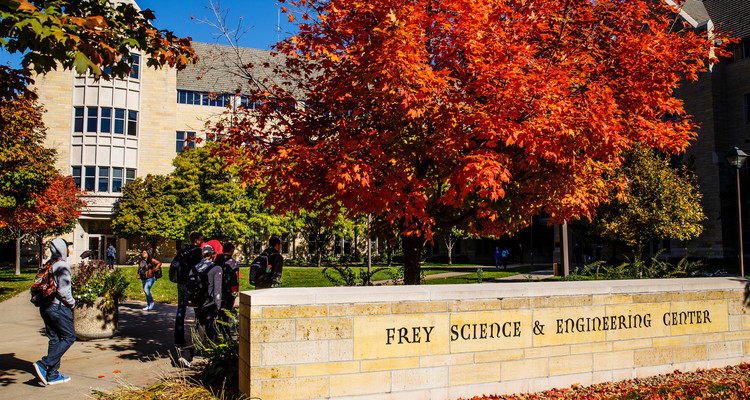The annual Basic Utility Vehicle competition day arrived on Saturday, April 27, and our Tommie engineers were geared up and ready to race. Driving through muddy terrain, our team consisting of seniors Cooper Gray, Josh Niemeyer, Janelle Mueller and Darya Klimok rose to the challenge of a seven-hour endurance competition with their Basic Utility Vehicle: an Engineering Senior Design project the team worked on since September 2018.

Members of the St. Thomas team pose with their BUV.
They finished strong again this year, earning both second place and the coveted "Most Innovative Design" award. The competition took place in Batavia, Ohio, and involved six teams, including entries from Trine University, Baylor University, and the University of Cincinnati. Partway through the competition, the St. Thomas vehicle lost water pumping ability due to a battery charging problem which crippled their electric pump. Despite finishing the race with empty barrels, they scored enough points to finish second in the race.
Themed as a developing world water delivery mission, the competition is an endurance race over rugged farm terrain. Each vehicle must pump up to 165 gallons of water onto their vehicle from a pond, successfully navigate a muddy 2.2-mile course, return the water to the pond, and repeat the process for seven hours. The team that delivers the most water is declared the winner.
This year's design improved on last year's Engineering BUV Senior Design project. Team adviser Andrew Tubesing commented, "Carrying forward with a vehicle built last year, which received the same awards at the prior competition, this year's team had made substantial modifications since September, including a redesign of the hydraulic drive system that provided the ability to switch between four-wheel drive and two-wheel drive for added speed. Dry land testing indicated a 20% improvement over last year. They also built a drive belt tensioning system and implemented a variety of improvements to vehicle functionality and ergonomics."
See more photos and comments on our School of Engineering Facebook page.







